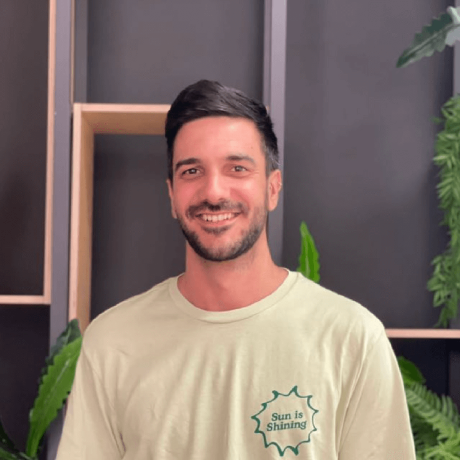rulilg/laravel-stable-diffusion
Stable Diffusion integration with Replicate and Laravel
Downloads
Stars
Version
Stable Diffusion integration with Replicate and Laravel
Laravel wrapper around the Replicate API to use Stable Diffusion to generate text2img.
- 🎨 Built-in prompt helper to create better images
- 🚀 Store the results in your database
- 🎇 Generate multiple images in the same API call
Installation
You can install the package via composer:
composer require rulilg/laravel-stable-diffusion
You can publish and run the migrations with:
php artisan vendor:publish --tag="stable-diffusion-migrations"
php artisan migrate
You can publish the config file with:
php artisan vendor:publish --tag="stable-diffusion-config"
This is the contents of the published config file:
return [
'url' => env('REPLICATE_URL', 'https://api.replicate.com/v1/predictions'),
'token' => env('REPLICATE_TOKEN'),
'version' => env('REPLICATE_STABLEDIFFUSION_VERSION', 'a9758cbfbd5f3c2094457d996681af52552901775aa2d6dd0b17fd15df959bef'),
];
Register in Replicate and store your token in the REPLICATE_TOKEN .env variable.
Optionally, you can publish the views using
php artisan vendor:publish --tag="laravel-stable-diffusion-views"
Usage
It's important to understand that the image generation process is async. We need first to send a request to Replicate and, after a few seconds, we can fetch the results back.
This is the code we need to generate an image. This will return a StableDiffusionResult model.
use RuliLG\StableDiffusion\StableDiffusion;
use RuliLG\StableDiffusion\Prompt;
StableDiffusion::make()
->withPrompt(
Prompt::make()
->with('a panda sitting on the streets of New York after a long day of walking')
->photograph()
->resolution8k()
->trendingOnArtStation()
->highlyDetailed()
->dramaticLighting()
->octaneRender()
)
->generate(4);
After the generate() method is called, an API request to Replicate is sent so they can start processing the prompt. This will generate a record in our database with a status="starting" value, and the ID returned by Replicate.
To retrieve the results back from Replicate, we need to run the following code:
use RuliLG\StableDiffusion\StableDiffusion;
// we get the Replicate ID and fetch the results back.
// This method will automatically update the record with the new information
$freshResults = StableDiffusion::get($result->replicate_id);
if ($freshResults->is_successful) {
dd($freshResults->output); // List of URLs with the images
}
If the results were already fetched, then no API request will be made, so we can safely call this method every time.
The StableDiffusionResult model
After a request to Replicate is made, a new record is inserted in your database with the following information:
| Column | Description |
|---|---|
| replicate_id | ID from Replicate, which we can use to retrieve the results back |
| user_prompt | Prompt passed to the Prompt::make()->with() method |
| full_prompt | Prompt generated with all the modifiers |
| url | Internal URL to fetch the results back from Replicate |
| status | Status. Can be one of: starting, processing, succeeded, failed or cancelled. This library doesn't support cancelling requests. |
| output | Array of URLs containing the images |
| error | Error description if needed (i.e. no NSFW content is allowed) |
| predict_time | Time spent by Replicate processing your image, which you will be charged for |
Additionally, the model has the following attributes to know the status of the prediction:
-
$result->is_successful -
$result->is_failed -
$result->is_starting -
$result->is_processing
Also, as results have to be manually updated through the StableDiffusion::get($id) method, we can also fetch the results that are not in a finished status:
use RuliLG\StableDiffusion\Models\StableDiffusionResult;
use RuliLG\StableDiffusion\StableDiffusion;
$results = StableDiffusionResult::unfinished()->get();
foreach ($results as $result) {
StableDiffusion::get($result->replicate_id);
}
Generating prompts
There are several styles already built-in:
| Method | Prompt modification |
|---|---|
realistic() |
{prompt}, realistic |
hyperrealistic() |
{prompt}, hyperrealistic |
conceptArt() |
{prompt}, concept art |
abstractArt() |
{prompt}, abstract art |
oilPainting() |
{prompt}, oil painting |
watercolor() |
{prompt}, watercolor |
acrylic() |
{prompt}, acrylic |
pencilDrawing() |
{prompt}, pencil drawing |
digitalPainting() |
{prompt}, digital painting |
penDrawing() |
{prompt}, pen drawing |
charcoalDrawing() |
{prompt}, charcoal drawing |
byPicasso() |
{prompt}, by Pablo Picasso |
byVanGogh() |
{prompt}, by Vincent Van Gogh |
byRembrandt() |
{prompt}, by Rembrandt |
byMunch() |
{prompt}, by Edvard Munch |
byKlimt() |
{prompt}, by Paul Klimt |
byKandinsky() |
{prompt}, by Jackson Pollock |
byMonet() |
{prompt}, by Claude Monet |
byDali() |
{prompt}, by Salvador Dali |
byDegas() |
{prompt}, by Edgar Degas |
byKahlo() |
{prompt}, by Frida Kahlo |
byCezanne() |
{prompt}, by Pablo Cezanne |
photograph() |
a photo of {prompt} |
highlyDetailed() |
{prompt}, highly detailed |
surrealism() |
{prompt}, surrealism |
trendingOnArtStation() |
{prompt}, trending on art station |
triadicColorScheme() |
{prompt}, triadic color scheme |
smooth() |
{prompt}, smooth |
sharpFocus() |
{prompt}, sharp focus |
matte() |
{prompt}, matte |
elegant() |
{prompt}, elegant |
theMostBeautifulImageEverSeen() |
{prompt}, the most beautiful image ever seen |
illustration() |
{prompt}, illustration |
digitalPaint() |
{prompt}, digital paint |
dark() |
{prompt}, dark |
gloomy() |
{prompt}, gloomy |
octaneRender() |
{prompt}, octane render |
resolution8k() |
{prompt}, 8k |
resolution4k() |
{prompt}, 4k |
washedColors() |
{prompt}, washed colors |
sharp() |
{prompt}, sharp |
dramaticLighting() |
{prompt}, dramatic lighting |
beautiful() |
{prompt}, beautiful |
postProcessing() |
{prompt}, post processing |
pictureOfTheDay() |
{prompt}, picture of the day |
ambientLighting() |
{prompt}, ambient lighting |
epicComposition() |
{prompt}, epic composition |
Additionally, you can add custom styles with the following methods:
-
as(string $canvas): to add a string at the beginning (i.e. "a photograph of") -
paintingStyle(string $style): to add a painting style (i.e. realistic, hiperrealistic, etc.) -
by(string $author): to instruct the system to paint it with the style of a certain author -
effect(string $effect): to add a finishing touch to the prompt. You can add as many as you want.
To learn more on how to build prompts for Stable Diffusion, please enter this link.
Credits
License
The MIT License (MIT). Please see License File for more information.



